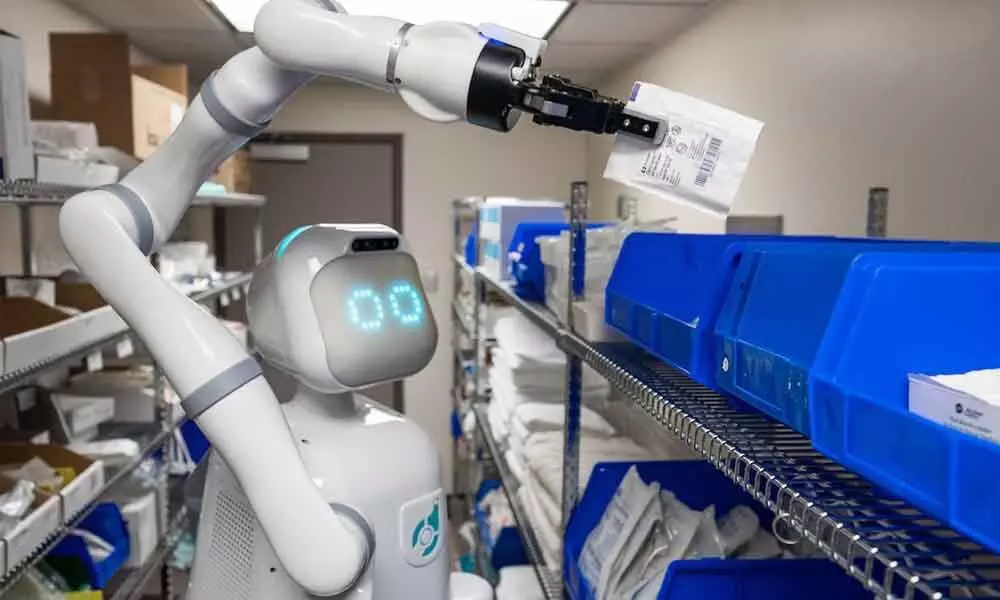Role of automated machines in combating the pandemic
image for illustrative purpose

Unmanned systems likely to address challenges of global health crisis
The global pandemic is a complex emergency scenario for law enforcement agencies and first responders, who must face unprecedented challenges. Social distancing, isolation, and the risk of contagion further complicate their roles today.
In response to evolving challenges, authorities may identify opportunities to use unmanned systems and robotic technology. Systems that were previously available for homeland security and military purposes are now employed in various tasks as part of the campaign against the virus and are likely to remain available to first responders in the future.
The use of autonomous, unmanned, and robotic systems proves valuable in various scenarios. These may be deployed to conduct surveillance and provide situational assessments before authorities enter a scene, enabling them to prepare accordingly. These systems are not only valuable in homeland security.
They may also prove valuable in addressing the challenges raised by the global health crisis. Robotic means may also be used to secure supply channels to contaminated areas without risking human lives. They can ship medical supplies using driverless trucks or delivering equipment via autonomous aerial delivery (drones). Unmanned aerial systems (UAS) may also be employed to survey large areas and assist first responders.
A fixed-wing drone assigned to support emergency missions is the ThunderB from small tactical UAS provider Blue Bird Aerosystems. The small drone (32 kg) can fly to a range of 150 km, conducting high-resolution surveillance of wide areas day and night.
Such magery can detect border infiltration across borders or protected perimeters, and localize unauthorized gathering of people in quarantine areas, to prevent riots and looting by directing law enforcement to handle the situation. ThunderB can also help dispatch medical supplies to remote locations.
In India Bluebird Aero Systems and Hyderabad based Cyient Ltd. and haved signed a Joint Venture to Offer UAV Systems to Indian Defence and Industry
The mini-drone can carry small cargo capsules under its wings and release them automatically at a designated location. These capsules can be dropped with the aid of a small parachute to deliver fragile items. With this capability, small drones can deliver vaccines and drugs to remote locations, avoiding lengthy ground transportation.
When pickup and delivery of essential goods are required, drones become useful, but today, each drone needs a specialist operator to deploy. Israel has developed a Vertical TakeOff and Landing (VTOL), electrically powered aircraft that autonomously delivers small packages over distances up to 250 km. The first version Spirit has the strictest international safety standards, flies at high speed and in almost all weather.
Drones expedite delivery services from medical teams and first responders to laboratories and hospitals, offering the fastest, reliable, and predictable transfer of refrigerated medical substances such as tissue samples and blood tests, blood donations, organs for transplant, and more. Using drones, deliveries can be completed within minutes and at very low costs.
On the ground, robotic platforms can be used to secure a safety perimeter around isolated areas or tighten the control of long border lines or autonomously transport patients in isolated capsules, thus minimizing the risk of contamination. Carrying special sensors and payloads, the drones can also be used for fire extinguishing or disinfection and sterilization of large spaces.
Other robots, are used for operations indoors. This robotic attendant was developed to provide assistive logistics and remote patient care in hospital wards contaminated with Covid-19. NurseeBot enables direct communication between doctors and coronavirus patients without any physical contact. The system contains a tablet computer that provides video and audio from the patient's side and a computer with a camera and a microphone on the medical team's side.
The UAV market is estimated to reach $45.8 billion by 2025, at a CAGR of 15.5 per cent from 2019 to 2025. The increasing use of UAVs in various commercial applications, such as monitoring, surveying & mapping, precision agriculture, aerial remote sensing, and product delivery, is also contributing to the growth of the UAV market.
Leveraging the extraordinary capabilities of Israel's defense industries, the International Defense Cooperation Directorate in Israel's Ministry of Defense (SIBAT), provides the gateway for foreign governments and enterprises seeking solutions to address the most pressing challenges posed by the pandemic.

